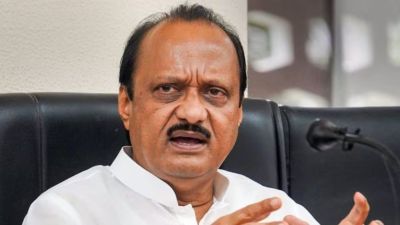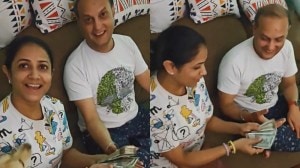India is home to 60 per cent of the world’s leprosy-affected and with Anti-Leprosy Day coming up on January 30, the Centre has vowed to redouble its efforts to find out the “hidden cases”. Hidden cases are those that go unreported and according to Dr Sunil Anand, director of the Leprosy Mission Trust of India, they are estimated to be at least twice the number of reported ones.
According to the National Leprosy Eradication Programme (NLEP), a Centrally sponsored scheme of the Health Ministry, 1.25 lakh new cases were detected in 2014-15 across the country.

It was in 2010-11 that the Centre took cognisance of the high number of leprosy cases and called for a national sample survey. The increase in new cases during 2012-13 was attributed to the extensive house-to-house survey that NLEP carried out to detect new and hidden cases and to treat them with multi-drug therapy. Through this active search, NLEP volunteers detected 15,875 new cases in 2014-15, which is 12.6% of the total new cases reported that year.
Story continues below this ad
There is now a persistent demand to give the leprosy eradication campaign a ‘polio-like’ push. A web-based reporting system is being launched on January 30 to bring this silent disease in the spotlight. Dr Anil Kumar, Deputy Director General (Leprosy) Ministry of Health and Family Welfare said that online data on leprosy cases will be uploaded at district and state level. Though this stepped-up reporting of cases is encouraging, the eradication programme is up against huge challenges.
To this day, when leprosy is completely curable with multi-drug therapy, in several parts of the country, people hold the belief that the disease is some kind of divine retribution, a kind of curse or punishment for past sins, or even the result of immoral sexual behaviour. These beliefs reinforce the image of the patient as someone who is physically and morally impure. It is this belief that has pushed those affected by the disease into leprosy colonies across the country.
Fear and stigma are the primary causes of under-reporting of the disease. The earliest symptom of leprosy is a white patch on the skin and loss of sensation. The fear of being discriminated against only means that even if someone spots such a patch, s/he does not seek a cure. Besides, since the patch does not cause any discomfort, the affected person does not usually report it.
The truth, however, is that the disease is completely curable with multi-drug therapy. The first dose kills 99.9% of the bacteria and depending on the severity, the treatment can range from six months to a year. According to the Leprosy Mission Trust of India, leprosy is mildly infectious – spreads through air or skin-to-skin contact – in the case of prolonged exposure to an untreated individual, but over 99 per cent of people have a natural immunity or resistance to Mycobacterium leprae, the bacteria that causes leprosy. Leprosy does not spread through touch and is also not a hereditary disease.
Story continues below this ad
Since a majority of people contract the disease through long-term contract with an untreated patient, the government wants to now step in and aggressively comb out the hidden cases.
Apart from the annual events held on January 30 (to coincide with Martyrdom Day as a mark of respect to Mahatma Gandhi’s selfless efforts in fighting the disease), a leprosy detection programme will be launched from February 23 to March 6 in 50 highly endemic districts of seven states of Uttar Pradesh, Bihar, Chhattisgarh, Jharkhand, Madhya Pradesh, Maharashtra and Odisha.
WHO had set 2000 as the target for elimination of leprosy, which means reaching a prevalence of less than 1 leprosy case per 10,000 population. India had achieved the target by 2005. However, a false sense of security set in and leprosy was no longer on the radar of the public health system. That’s when the numbers started rising. Though the national level, the prevalence at present is less than 1, there are some states where the prevalence is more than 1.
WHO’s Dr Poonam Khetrapal Singh, Regional Director for South-East Asia, voiced her concern about the high number of child leprosy cases with Grade II disability (visible deformity that can include severe visual impairment). One in every 10 new leprosy patients is a child and globally, 19,796 new cases were found in children. According to NLEP data for 2014-15, out of 11,365 children with leprosy, 245 had Grade II disability. Of 2,392 children in Bihar, at least 77 had Grade II disability — the numbers are 37 out of 2,045 for Maharashtra and 46 out of 1,375 for UP.
Story continues below this ad
Every state has planned active search programmes through house-to-house visits by Accredited Social Health Activists in highly endemic districts. The aim is to diagnose the disease early. The information campaign is crucial as these patients and their families, who were historically ostracised from their communities, need to be encouraged to come forward and receive treatment.
The concern, however, is that even if the ASHA worker identifies a suspected leprosy patient, the primary health centres need to be equipped with doctors who are competent to diagnose the disease and stock medicines to provide early and sustained treatment. In the case of polio, there is a vaccine which helped eradicate the disease. Not so in the case of leprosy that is still characterised by stigma and discrimination. Moreover, unlike the AIDS campaign that had the endorsement of celebrities, leprosy remains a poor man’s disease that few want to talk about.

 In this file photo, a woman suffering from leprosy eats food at a leper colony in New Delhi. (Source: AP)
In this file photo, a woman suffering from leprosy eats food at a leper colony in New Delhi. (Source: AP)





































